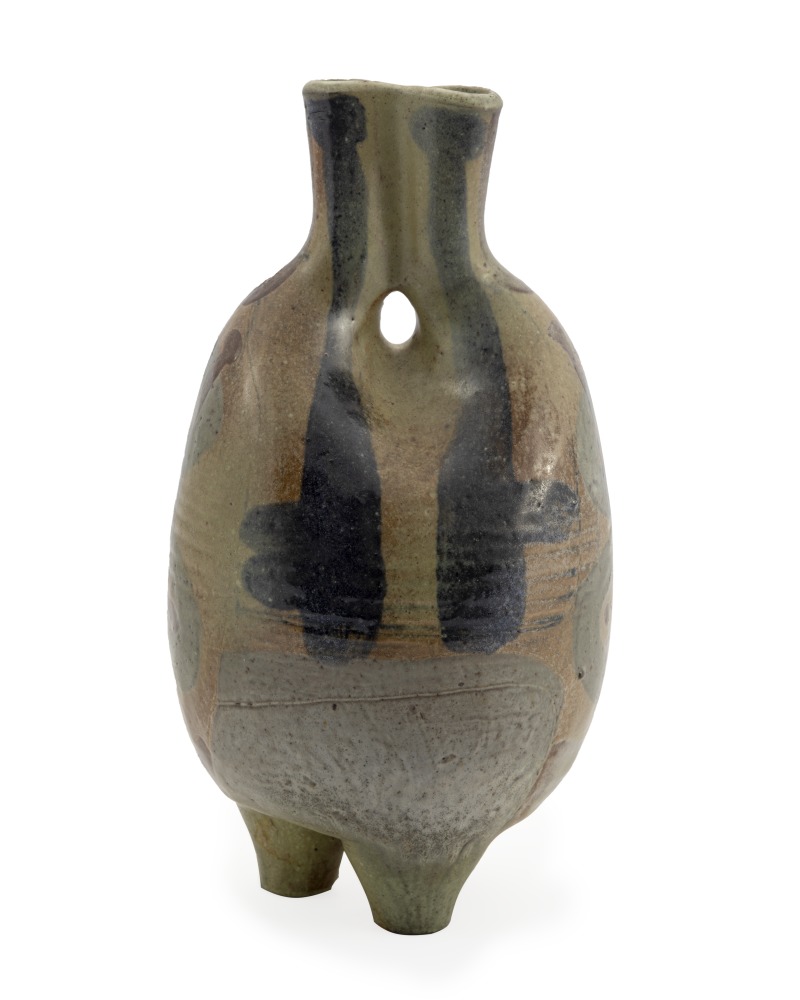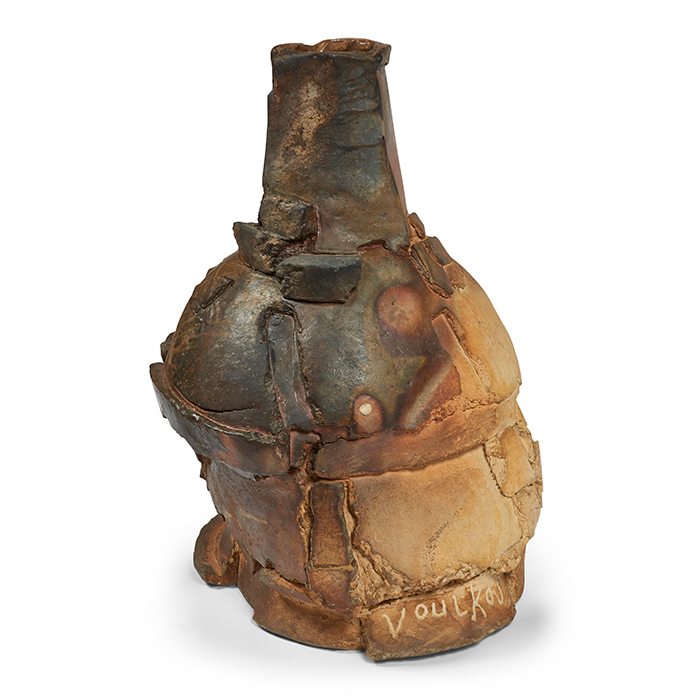Pottery has a long history as a tool for self-expression and a method of self-care. Whether your relationship to ceramics is placing your muddy hands around a spinning mound of clay, or your clean hands around a mug of tea, you’ve experienced the therapeutic qualities of pottery.
In throwing and firing the earth’s clay, humans have used the same techniques for thousands of years. In the resurgence of handmade clay art in the twentieth century, called the Studio Pottery Movement, artists emphasize the timelessness of their ceramic making process. These artists explored the beauty in clay’s dichotomy between solidity and fragility. Ceramics are sturdy, comforting, and of the earth, but they are also easily broken and needing care. Potters can toy with this paradox producing ceramics with appealing roundness that begs to be touched, but by pushing clay so thin that it can easily be broken.
Clay leaves the literal impression of an artist’s fingerprints, but also can capture the artist’s emotions and intentions. Some pottery communicates warmth, peace, and balance through earthy tones and soft edges, like Katherine Choy’s Double Spout Vase in NOMA’s collection. Alternately, in the mid-twentieth-century, pioneering artist Peter Voulkos ushered in a different side of expression through clay. His inverted stacked vessels like NOMA’s Big Ed convey honest human aggression with a jagged, scarred clay surface that reveals aggressive handling and ash from the kiln-firing process.
Expressive ceramics can be rough or refined, a comforting form or a wild experimentation, but the final result communicates the potter’s direct process of transforming clay through a mental, sensual, and physical experience. Whether throwing pots on a wheel or enjoying our morning coffee cup, we are part of the continuum, calmed through pottery’s timeless connection to the Earth.
—Mel Buchanan, RosaMary Curator of Decorative Arts & Design
To learn more about American Studio Pottery, purchase Personalities in Clay: American Studio Ceramics from the E. John Bullard Collection from the NOMA Museum Shop.
Virtual programs at NOMA are made possible in part by a major grant from the National Endowment for the Humanities. Any views, findings, conclusions, or recommendations expressed in this article do not necessarily represent those of the National Endowment for the Humanities.
NOMA is committed to uniting, inspiring, and engaging diverse communities and cultures through the arts — now more than ever. You can support NOMA’s staff during these uncertain times as they work hard to produce virtual content to keep our community connected, care for our permanent collection during the museum’s closure, and prepare to reopen our doors.


